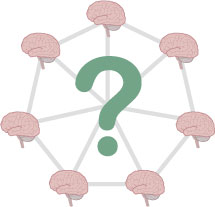
Do you know what a mouse potato is? It’s a person who spends too much time staring at a computer screen. Mouse potatoes are the couch potatoes of the 21st century. In fact, Merriam Webster just added the term mouse potato to its august dictionary.
Perhaps you know a few mouse potatoes. Perhaps you are one. But just learning the term mouse potato suddenly makes you think about how much time you spend in front of the computer. That’s the power of vocabulary. It enables thinking. The size of your vocabulary impacts the size of your mental world.
Vocabulary as Inquiry
All right, so you’re saying, “Here we go—vocabulary. It’s so elementary.” Yes, it is—as in the word element: the building blocks of everything. In fact, the origin of the word elementum is the first three letters of the Canaanite alphabet. When we talk about elements, we are reciting our Canaanite ABCs.
Do you see how one word—elementary—has taken us from language arts to science to social studies? Do you see how knowing that elementum is the same as ABCs influences how we think about the Periodic Table of the Elements, about elementary school, about Holmes’s constant insistence that it is “elementary, my dear Watson”?
A word doesn’t have just one meaning. It is freighted with meaning. In its prefixes, roots, and suffixes, each word stores the DNA of human experience.
Vocabulary therefore shouldn’t be rote memorization. It should be inquiry.
Read more











